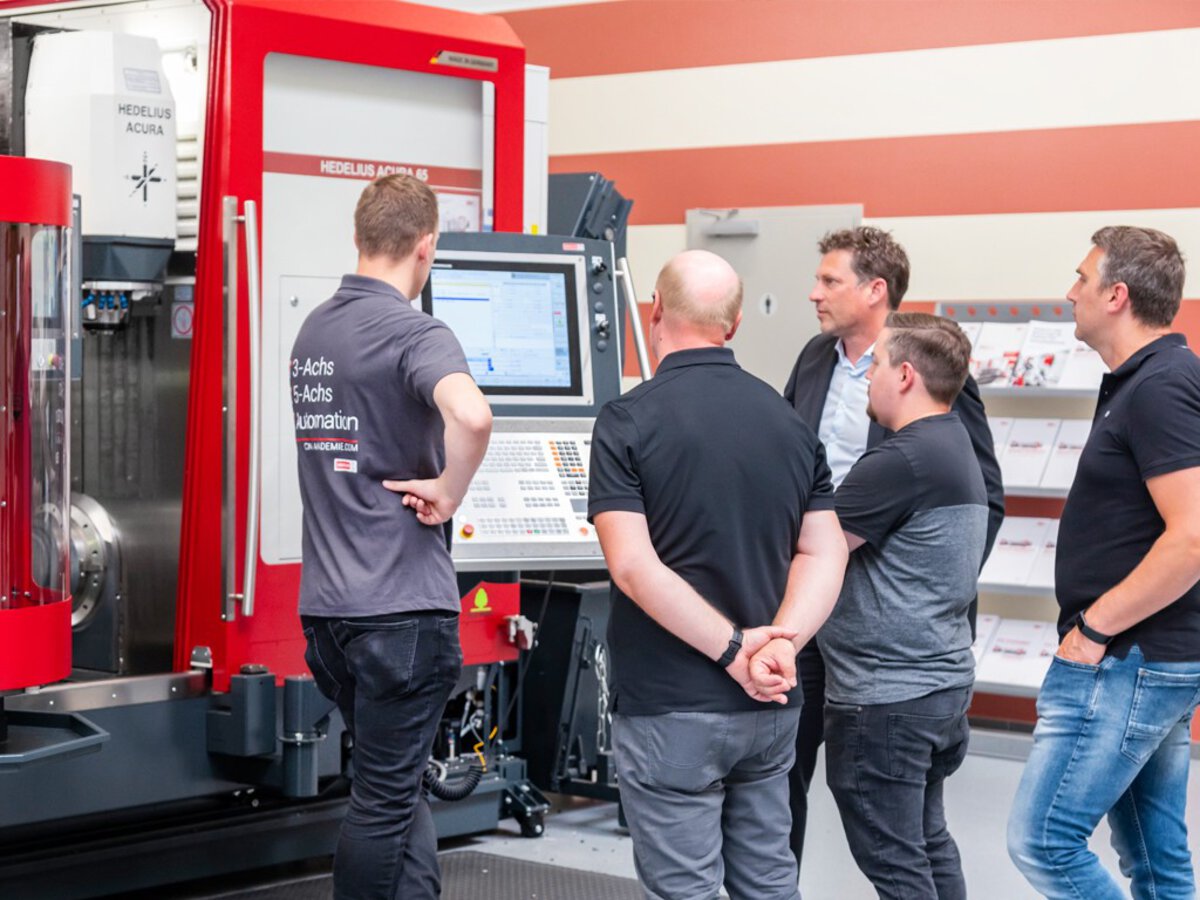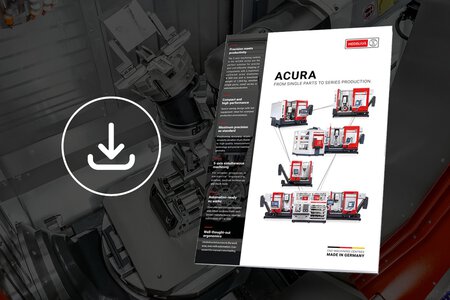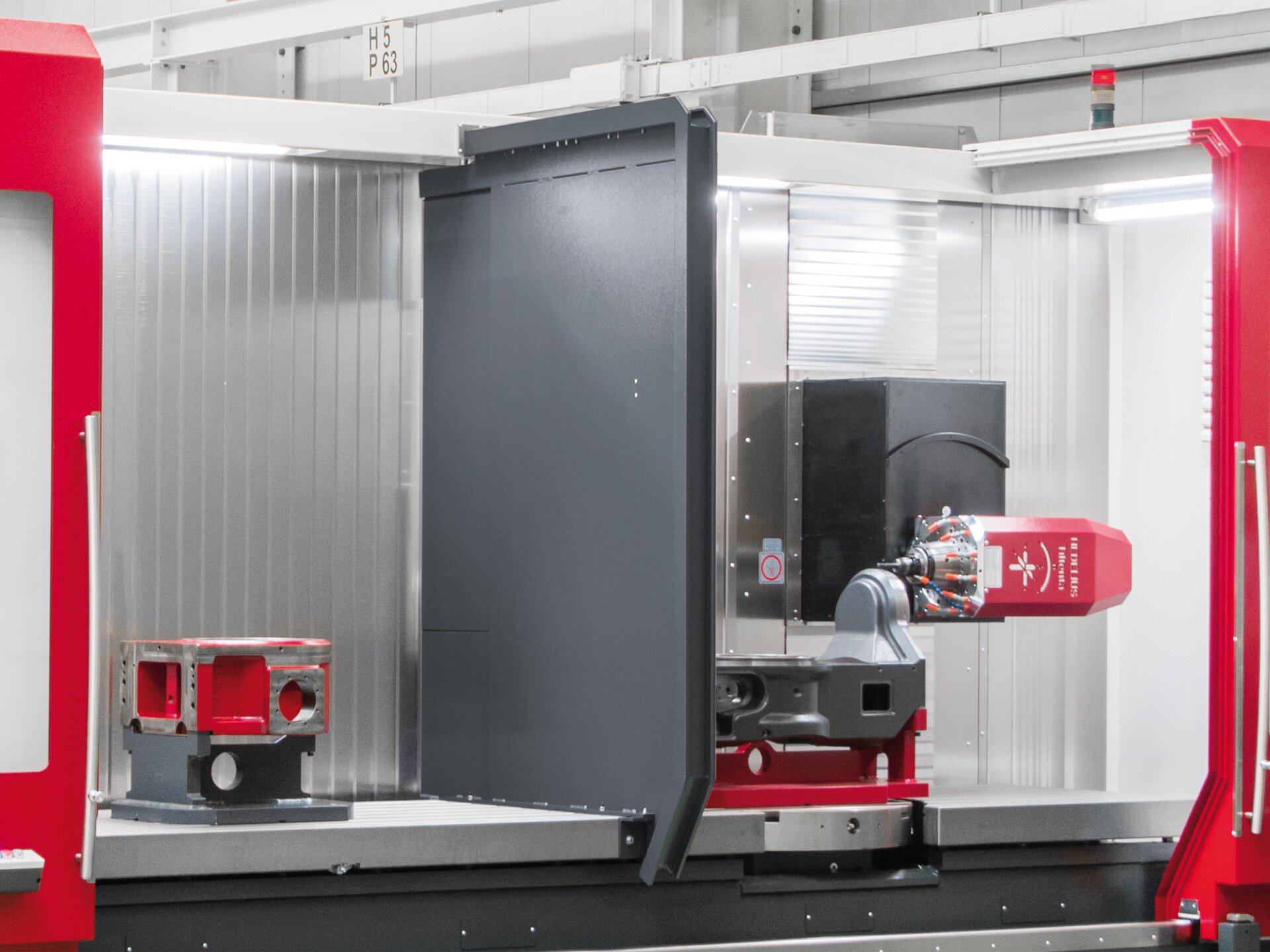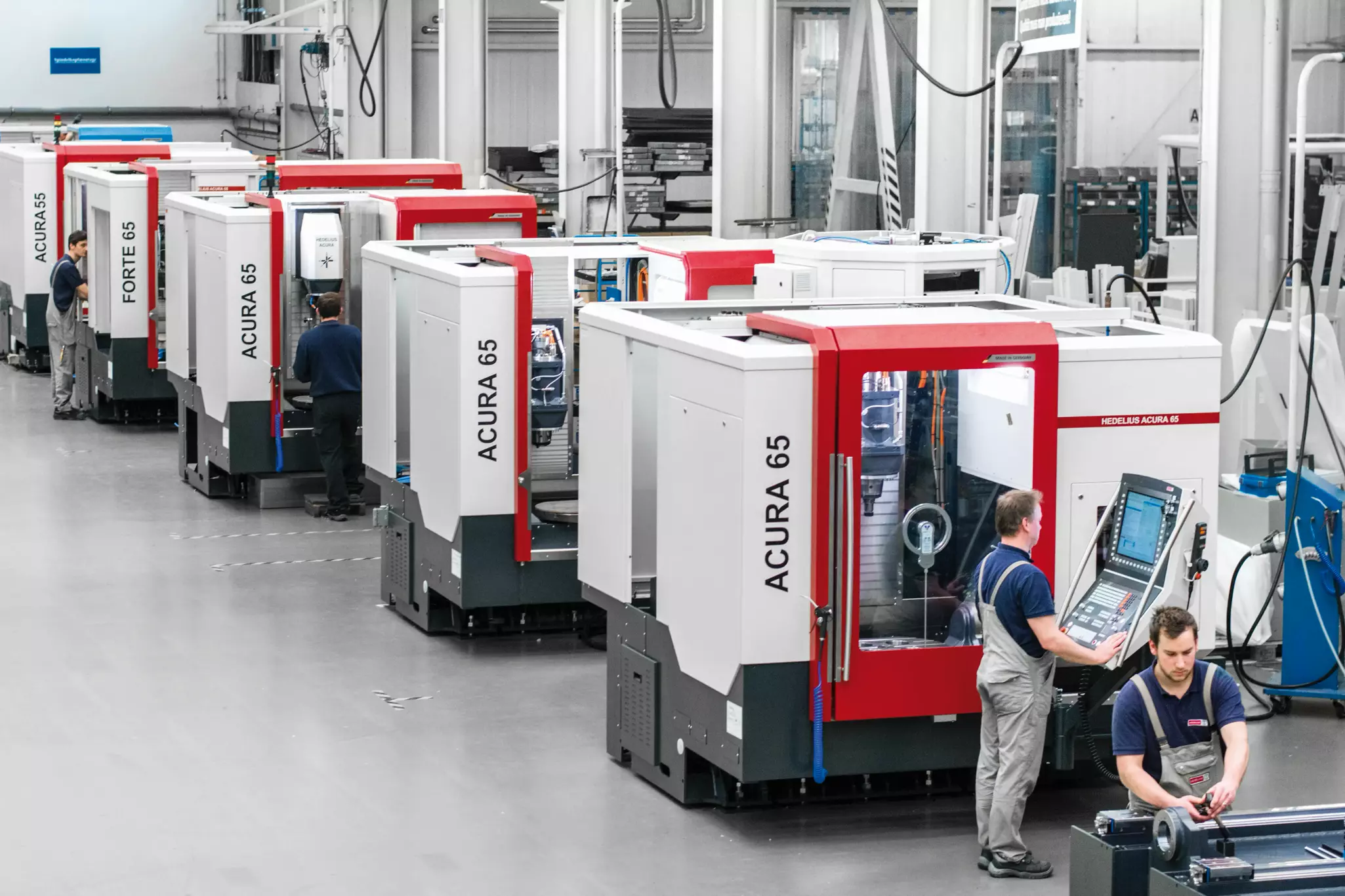29 June 2022
400 VISITORS AT HEDELIUS.
To the big in-house exhibition in 2022.
Great interest in TILTENTA 10 and automation of small batch sizes at the HEDELIUS in-house exhibition.
Barely presented, already sold - the TILTENTA 10, the new member of the TILTENTA family of swivelling head machining centres, was a resounding success at the HEDELIUS in-house exhibition at the end of June. The first machine will be delivered at the end of the year. "It was our best in-house exhibition ever," says HEDELIUS Managing Director Dennis Hempelmann, summarising three successful days. "The response was record-breaking and there was a great deal of interest, especially in the automation of small batch sizes. A big thank you to all our guests and co-exhibitors."

Premiere of the TILTENTA 10.
The premiere of the TILTENTA 10, which was closed live under chip, was very well attended. The machining centre with extra-large Y-axis and Z-axis travel paths of 1000 millimetres each and infinitely variable swivelling main spindle complements the TILTENTA series, which has been built hundreds of times. The TILTENTA 10 is equipped with the SK50 BIG PLUS duplex contact spindle system as standard. The simultaneous taper and face contact of the tool fitting in the BIG PLUS machine spindle ensures an extremely stable connection between the tool fitting and spindle.
New: pallet changer P406.
The in-house MARATHON P406 pallet changer for production-accompanying fixture automation in single parts or small series production, which was shown live for the first time, also met with great interest. In combination with the ACURA 65 5-axis machining centre and the larger 90-position tool magazine, this automation solution drastically reduces tooling times. The outstanding accessibility was praised. The six pallet locations, which are designed for a clamping weight of 250 kg each, can be rotated, which is unique in this class.


Automation cell Robotrex 96 from LANG.
The Robotrex 96 automation cell from LANG Technik GmbH, connected to the compact ACURA 50 5-axis machining centre, was also shown for the first time. The automation cell consists of a FANUC 6-axis robot with a 50 kg load capacity and two automation carriages, tooling with a total of 46 vices. The system offers a high degree of flexibility and covers a wide variety of parts.
Favoured by customers: ACURA series.
Another highlight was the ACURA 85, the largest version of the popular ACURA series. The rotating/swivelling table with bearings on both sides and the special travelling column concept of the 5-axis milling machine guarantee the machine's stability. With travel paths of 900 x 850 x 700 mm (x/y/z), a contact surface of Ø 850 x 750 mm and a permissible clamping weight of 1000 kg, the ACURA 85 is also designed for chipping large and heavy parts, particularly in tool and mould making.

More news.

We will be on company holidays from 24 December 2025 to 2 January 2026. Please note that our customer service and sales department will only be available to a limited extent during this period. We will process your enquiries as soon as possible after our return. Further information on contact options and the availability of our customer service and sales team can be found here.

(PDF | EN) Automate your HEDELIUS machining centre with the innovative RoboJob systems and increase your productivity around the clock. Whether small series, medium quantities or unmanned night production: with the Mill-Assist and Tower systems, you can work more economically, reduce downtimes and ensure the long-term competitiveness of your production. Download the free "RoboJob automation for HEDELIUS" folder now and find out how you can upgrade your machining centre to a smart automation solution in just a few steps.

Our HEDELIUS in-house exhibition on 14 and 15 May 2025 was a complete success - and we owe this above all to you! A big thank you to the numerous visitors, but of course also to our dedicated employees and our strong partners. The personal exchange with our guests, inspiring conversations and new impulses made the two days in our technology centre a real highlight.
Take a look back at this successful event with our event video and the impressions in pictures!








































































































































